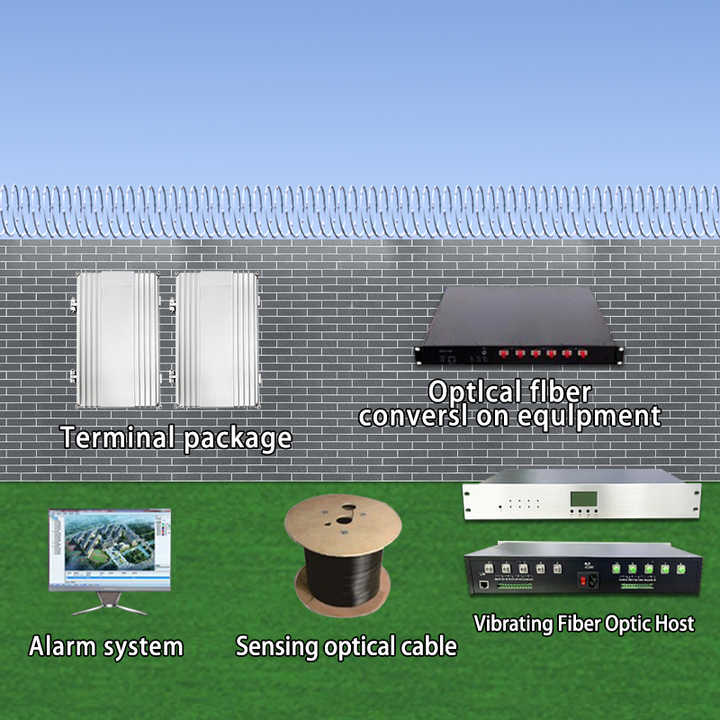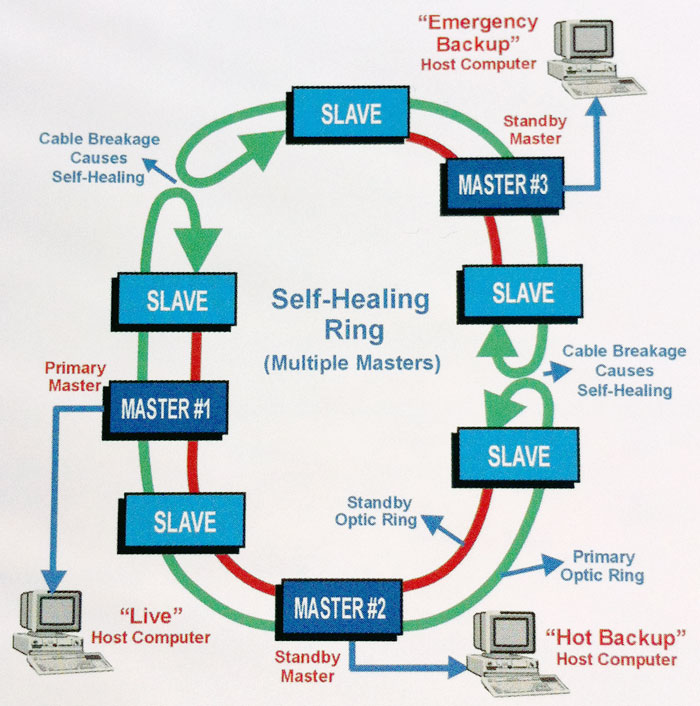Enhance Your Safety And Security With Advanced Fiber Optic Protection Systems
In an era where safety is extremely important, sophisticated fiber optic safety and security systems offer an engaging service for improving safety throughout different environments. What implications do these developments hold for future safety and security steps?
Advantages of Fiber Optic Safety And Security
Harnessing the benefits of fiber optic modern technology dramatically improves protection systems across different applications. Among the key advantages is the raised bandwidth capability, enabling the transmission of huge quantities of data at broadband. This is especially vital for real-time video surveillance, where high-resolution feeds can be sent without latency, guaranteeing immediate response capacities.
In addition, optical fiber exhibit superior resistance to electro-magnetic disturbance, which is crucial in settings with prospective signal disruptions. This reliability ensures consistent performance in crucial safety and security procedures. Fiber optic wires are much less susceptible to tapping and unauthorized access contrasted to typical copper electrical wiring, thereby improving data stability and confidentiality.
One more significant benefit is the durability of fiber optic systems; they are much more resistant to ecological elements such as dampness, temperature level variations, and corrosive materials. This durability translates to reduce upkeep prices and longer life-spans for safety installations.
Lastly, the lightweight nature of fiber optic cables helps with easier setup and directing, especially in complicated facilities (fiber optic security system). Inevitably, the combination of fiber optic modern technology into protection systems not just bolsters defense procedures however also enhances operational performance
Secret Features to Think About
When examining fiber optic protection systems, a number of vital attributes need to be thought about to make sure optimal efficiency and efficiency. Analyze the system's detection variety and level of sensitivity; a substantial range enables for monitoring large areas, while high sensitivity ensures that also minor disturbances are spotted without delay.
Following, consider the integration capabilities of the system. A fiber optic protection system need to flawlessly interface with existing safety actions such as cameras and alarm systems, developing a natural safety and security network.
Sturdiness and environmental resistance are also essential attributes. Ensure that the system is designed to endure severe weather and possible physical hazards, as this will certainly prolong its operational life expectancy.

Last but not least, look right into the scalability of the system. A durable fiber optic safety system ought to be conveniently expanding to suit future demands without substantial overhauls. By meticulously thinking about these attributes, you can pick a fiber optic security solution that improves safety and protection in your atmosphere.
Installation Refine Summary
To efficiently apply a fiber optic security system, a systematic setup process is crucial. This procedure starts with a comprehensive website assessment to establish the specific safety and security demands and to identify ideal areas for fiber optic cords and security devices. Following this evaluation, the installment team will certainly develop a thorough plan, consisting of cable television paths, needed devices, and compliance with regional guidelines.
Following, the setup includes laying the fiber optic cables, guaranteeing they are protected from ecological factors and physical damage. Correct handling techniques are crucial, as fiber optic cables are sensitive and can be conveniently home harmed. After the cabling is mounted, ports and terminations are carefully finished to guarantee signal integrity.
The succeeding stage contains setting up safety and security devices such as electronic cameras, movement detectors, and security system, all incorporated with the fiber optic network. Rigorous screening is conducted to validate that all parts are working properly and to ensure optimum efficiency.

Comparing Fiber Optic to Typical Equipments
The advancement of security modern technology has actually brought about substantial improvements in the contrast in between fiber optic systems and traditional copper-based systems. Fiber optic systems make use of light to transmit data, providing premium data transfer and speed contrasted to their copper equivalents. This causes enhanced data transmission capacities, making fiber optics ideal for high-resolution video clip security and real-time tracking.
Additionally, fiber optic cables are immune to electro-magnetic disturbance, reducing the likelihood of signal degradation caused by outside elements. This characteristic guarantees consistent efficiency, even in challenging environments. On the other hand, traditional copper systems are extra vulnerable to disturbance, causing possible susceptabilities in safety applications.
Toughness is an additional benefit of fiber optic systems. They are much less susceptible to harm from environmental aspects such as moisture and temperature level changes, which can compromise copper circuitry. Fiber optics are lighter and thinner, allowing for less complicated installation and decreased physical footprint.
Nevertheless, conventional systems tend to have lower first costs, making them attractive for budget-conscious projects. While fiber optic systems may call for a higher ahead of time financial investment, their long-term benefits-- such as reduced upkeep prices and greater reliability-- commonly outweigh the initial cost, placing them as a superior choice for modern-day safety needs.
Future Trends in Protection Innovation
Arising patterns in security innovation are poised to change the landscape of surveillance and risk discovery - fiber optic security system. As organizations progressively encounter sophisticated risks, innovations such as expert system (AI) and maker learning (ML) are coming visit this web-site to be important to safety systems. These modern technologies improve the ability of fiber optic systems by allowing real-time information evaluation, identifying anomalies, and automating feedbacks to possible breaches
Additionally, the integration of the Web of Points (IoT) is revolutionizing safety and security structures. IoT devices can give comprehensive situational recognition and her latest blog promote smooth communication between different safety elements. This interconnectedness enables for much more efficient surveillance and faster occurrence response times.
Biometric verification is additionally gaining momentum, providing a higher degree of protection via unique physical attributes. As this technology advances, it is most likely to be included into fiber optic systems for boosted accessibility control.
Verdict
Finally, advanced fiber optic protection systems stand for a considerable development in safety and surveillance modern technology. Their premium data transfer, resistance to interference, and resilience promote reputable tracking and data honesty. As these systems integrate AI and IoT capabilities, they boost the general safety and security framework, making certain robust defense for properties. The transition from conventional systems to fiber optic solutions mirrors an expanding pattern in the direction of more effective and effective safety procedures in a significantly complex technical landscape.